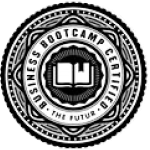There are several advantages of having a high-ranked website. Search engine optimization is pivotal in establishing a site’s credibility and trustworthiness. Around 68% of the audience searches their queries on Google search engines. Therefore, if a brand uses similar keywords to optimize its online content, it will organically boost website traffic and strengthen its online presence.

Why Incorporating SEO into Web Development Is Essential?
- A site will look more trustworthy if it has adopted SEO strategies, as viewers prefer the top search results as authentic information.
- Search engines consider user experience as a significant ranking factor. Thus, a SEO friendly website design offers a better user experience.
- SEO is a less costly method to produce revenue and sales. It helps in saving money by reducing the amount paid for promotional ads or marketing campaigns.
- 32% of the audience generally picks the top results on search engines. Thus, if a website is ranked at the top, it will naturally gain more views.
Best Ways to Adapt SEO on A Website
1. Apply Relevant Keywords
Google highly values the initial 200 words of a blog, so it’s important to add relevant keywords in the first sentence or paragraph without affecting the quality of content. Also, secondary keywords should be used in the first 200 words but not necessarily in the first sentence.
Steps to choose the right keywords:
- Pick a keyword search tool like Google Keyword Planner, Semrush or Ahrefs keywords Explorer
- Search for words relevant to your brand
- Analyze which ones are the most functional
- Shortlist keywords with a minimum 10,000 search volume and a maximum 30 difficulty level.
Writing quality content and creating an original outline is essential because Google reads it and ranks it with worldwide content. When optimizing content, focus on the right keywords and avoid misleading Google. As a result, primary keywords must appear in all essential spots, followed by secondary keywords, and then any other keywords. Picture it as a pyramid! The article’s primary keyword will be at the top of the pyramid, then the secondary keywords, and finally, other keywords to complete the overall structure and design.
The Implementation of Title Tags and Meta Descriptions
A title tag is an HTML tag placed at the top of web pages. It offers an initial clue or context regarding the current topic of the page. It is featured on search engine results pages (SERPs) as it is usually a clickable link on the browser. Except for these two places, the title tag isn’t seen repeatedly like body copy, image content, and other aspects on a web page. Moreover, the title tag had less impact on organic rankings, especially when content is low quality or has neglected SEO.
Also, a meta description is an HTML element summarizing the whole webpage. The meta description tag is shown as part of the search snippet in SERP. It gives users an idea about what is on the page and how it’s linked to their searched question.
Tips to write Title Tags and Meta Descriptions
- Title tags are less than 70 characters, and meta tags generally range from 150 to 160.
- Add primary keywords in the title tags and meta descriptions.
- Add catchy lines, important facts or call-to-action statements.
How do You Create Backlinks for Your Website?
1- Attract backlinks with good content:
This link-building technique suggests high-quality pages automatically attract backlinks from relevant publications.
Following are the common examples you can add to your content to attract backlinks:
- Case studies based on numbers
- Detailed long-form guides
- Infographics
2- Connecting with Resource pages:
Link building with resource pages is the easiest and most efficient way to get backlinks.
3- Look for Broken Links:
Search for broken links on webpages and contact web admins with resources to replace them.
4- Look for Popular Content:
The following are the techniques for building backlinks based on content:
- Search popular content that has gained a lot of links.
- Make better content
- It should cover trendy topics so that people are interested to read
- Promote the content to connections that were linked to popular pieces.
Hence, in simple words, make good content and show it to interested people.
5- Find out the Gap Links:
The fastest way to get backlinks is to do a link gap analysis to find sites linked to competitors but not to you. A website linked to more than one competitor may relate to yours. Backlink Gap tools can do it quickly; all we have to do is add a domain and four competitors
6- Find a good Testimonial:
Customers usually depend on testimonials and feedback before purchasing. Also, testimonials can be helpful to increase the number of backlinks to a web page.
Here is how it happens:
- Step1: Bloggers writing articles about products or services. They take links from the owner’s website and add it to their content.
- Step 2: The notification is sent to the website’s owners.
- Step 3: The web owners then share the article on social platforms or refer to others through links. Also, if a webpage has a feedback corner for the customers, it is easy to collect reviews within less time.
Work with Vowels
Ignoring SEO means you are losing the ability to make your site stand out in the world. Vowels advises placing SEO at the top of your list when developing a website. Furthermore, if we work for you, we can create a website that is both SEO-friendly and designed well.
Click here to contact us now.
FAQs
1. Why is SEO important in UX designing?
SEO content and UX designing go hand in hand. SEO-optimized UX design can improve rankings, decrease page abandonment, increase conversions, and more revenues.
2. Do meta descriptions affect search rankings?
Yes and no. However, the meta description can affect a site’s click-through rate (CTR) in Google SERPs, eventually impacting page ranking.
3. How many keywords are considered suitable to add content?
It depends on the keywords’ nature and the content’s size. The normal law is to add primary keywords once after 100-150 words. Hence, the keyword density should be 1% -2 %.






